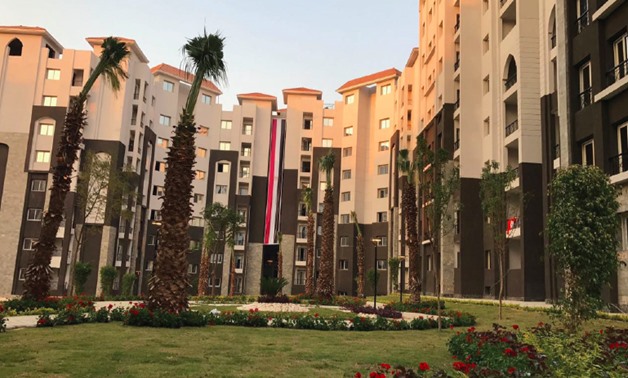
FILE - New Administrative Capital
CAIRO - 23 March 2018: Following the economic downturn in the country, companies have recognized the importance of aligning long-term strategies with government policies and agendas to ensure sustainable success. Public and private partnerships (PPP) have become an important tool for the government to appropriately allocate risks and responsibilities associated with expanding the economy and stimulating job creation.
While the government utilizes the private sector to efficiently run public services, the private sector gains legal security for maximizing value for money for governments, which inspires confidence in the longevity of business operations. In light of this mutually beneficial alliance, these partnerships aim to help improve governmental challenges while simultaneously developing expertise in vital sectors such as infrastructure, communications and housing, among others.
At the forefront of the country’s development plans is Egypt’s Vision 2030 sustainability goals, directing the strategy of policy-making and private sector contributions. The economic, social and environmental dimensions define the outline of the sustainable growth the government aims to achieve, with high dependency on the private sector’s innovation. The economic pillar is set to increase the GDP growth rate per annum at 7 percent; through reduction of the unemployment rate and enhanced innovations in in the industrial sector. The environmental pillar aims to decrease pollution and water waste efficiency through regulation policies nationwide. A key objective set in the social justice pillar is achieving confidence in the government, set at 80 percent by 2030; through enhanced primary healthcare and education, reduction of poverty rates and boosting infrastructure.
In an effort to move toward the goals set under infrastructural development, the housing and transport ministries invited local and international companies last month to submit contractual offers to finance and maintain monorail projects from Giza to the New Administrative Capital, costing at least €1 billion and set for completion by 2020. This project aims to link central Cairo to the New Administrative Capital, allowing for more cohesive societal integration in the country to reach growth plans between 2020 and 2050, funded through international monetary organizations and government loans with high profit margins foreseen. With the completion of the project by 2020, experts have predicted that the monorail would transport 48,000 passengers per trip, and 250,000 passengers daily, keeping up with growth of the city. The World Bank had estimated in 2012 that the Middle East and North Africa region would need between $75 and $100 billion in investments per year over the next 20 years to meet its infrastructural development needs.
In the education sector, there are plans to develop and run 200 public-private partnership schools this month for the Ministry of Education’s PPP schools projects aimed at enhancing primary education across the country. The latest report issued by the General Authority for Educational Buildings (2017) confirmed that there are 2,370 districts in 17 governorates deprived of education, with Sohag at the top of the list with 351 districts short of schools. The numbers released by the Ministry of Education on the number of classes, schools and teachers across the country show evidence of high classes-to-students ratio difference between governmental and private schools. Government sector schools hold a ratio of one class per 62 students, and private sector entities hold a ratio of one class per 37 students, conveying a gap of quality educational services.
The reduction of the density rate of students in classes, especially in the primary stage, requires more than LE 15 billion worth of investments as Egypt’s Vision 2030 goals are set to position Egypt in the top 30 countries with primary education quality. The launch of the PPP educational project will ensure the government’s commitment to improve the current conditions, and achieve the set objectives for a more prosperous education system in the country.
Considering economic growth, several national projects are in progress to develop new infrastructure and housing projects, attracting international foreign direct investments in the country. The most prominent of these is the New Administrative Capital, which houses the main government departments, administrative and financial offices, and foreign embassies. To date, the project is hosting a number of public partnerships to develop 20 housing projects worth $15 billion for an occupancy of 5 million, and government administrative districts attracting $10 billion worth of investments.
A representation of this foreign investment is portrayed with the Chinese company China Fortune Land Development (CFLD) partnering with the Ministry of Housing and Investments, developing 60 square kilometers with investments worth $20 billion, for educational, health, commercial and entertainment projects. Local companies in various sectors are identifying similar opportunities to invest in these projects, with high foreseeable profit margins. Real estate companies like Misr Italia, Mid Town, Sodic, and Memaar El Morshedy have already announced development plans in the New Administrative Capital.
As companies continue to assess the opportunities of growth in alignment with government entities, businesses see the clear elevation in category competition, enhanced innovation with impact in specialized industries, and optimized consumer targeting creating unprecedented progress in the country. Positive market sentiment toward progressive projects has led to an immense growth in public-private partnerships, providing evidence that exclusive dependence on government alone cannot spur the economy.

Comments
Leave a Comment